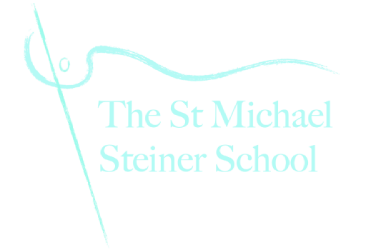Outdoor Curriculum
That I, with all my might, may love to work and learn.
(from the children’s morning verse)
Steiner education is sometimes described as an education of ‘head, heart, and hands.’ In other words, the education of children in their thinking, in their feeling, and in their will; it is this third aspect which we strive to develop in part through our Outdoor Curriculum.
What is it that enables certain people to work with determination and persistence towards their goals, whilst others give up or become distracted? We may all have good ideas and cherish valuable dreams, but without doing something about them, they will never be realised. Can this application of effort be taught? It seems rather important that it should, and in a way which will help the children to work freely in the world when they are older, without having to be compelled to work only through necessity or reward.
In the Kindergarten the children are always busy, and their play often looks like a little version of the adult world of work: within a morning one can observe here a construction site, there a kitchen, “next door” a doctor’s office. The children work out of imitation and in so doing display a naturally strong will to work, which expresses itself quite unconsciously.
In the Lower School the children are helped to develop good working habits: how to hold their pencils, sit properly, form their work in an orderly way. They also take an active role in the care of their classrooms. They are each given a task to do for the week or month, or even for the whole term: cleaning the blackboard, or sweeping up after lunch. This is their job and they learn to take responsibility for it. The more they become accustomed to working for their little community without a second thought, the more they build a strong foundation to carry them through the tasks they will eventually set for themselves as adults.
As the children grow older and more able this ‘little community’ gradually increases to encompass more of the school and the pupils are given more responsibility. The children work outdoors on gardening projects and improvements to the school grounds and, when they reach adolescence, take part in maintaining the school by carrying out repairs, cleaning the gutters and building new buildings. Most of these jobs are novel and fun to begin with, but, as with a knitting or a woodwork project, they require that little bit of uphill struggle at the end to finish properly. The more the students become accustomed to this experience and to seeing the fruits of their labour, the more formidable they will be when they set out into the world, to realise change for the better.
Another task of our Outdoor Curriculum is to bring the pupils consciously into their surroundings. During the academic year pupils spend a large portion of their time at school, and it is crucial that care for the space they inhabit is part of their learning experience. Again this responsibility, like the weight of tasks, increases incrementally as the children grow up, but always the children have a part in caring for their environment. This work is invaluable as it not only develops the will and helps locate the children geographically; it also teaches them practical skills essential in the modern world.
Often in timetabling ‘Outdoor Curriculum’ or ‘Maintenance’ become synonymous with ‘Gardening’, but of course allowing the pupils to work in nature, particularly in the Lower and Middle School, remains an essential part of our education. As well as helping to maintain what we already have, the pupils spend a great deal of time developing new spaces such as the herb garden, kitchen garden, and class allotments. Through this the children help to transform spaces, see them grow, and pass them onto the younger classes. Working with the Biodynamic calendar, planting and sowing on flower-, leaf-, and root-days, a variety of plants and tools are used and students learn new skills according to their age and ability.
The value of all of this work is perhaps most evident at Michaelmas when we hold our annual Work Day. All of the Lower, Middle and High School pupils are given tasks which will help beautify, maintain and enliven the school itself. Age groups are often mixed for this day giving the pupils a greater feeling of working communally towards a common goal.
Photos from our Michaelmas Work Day 2018


